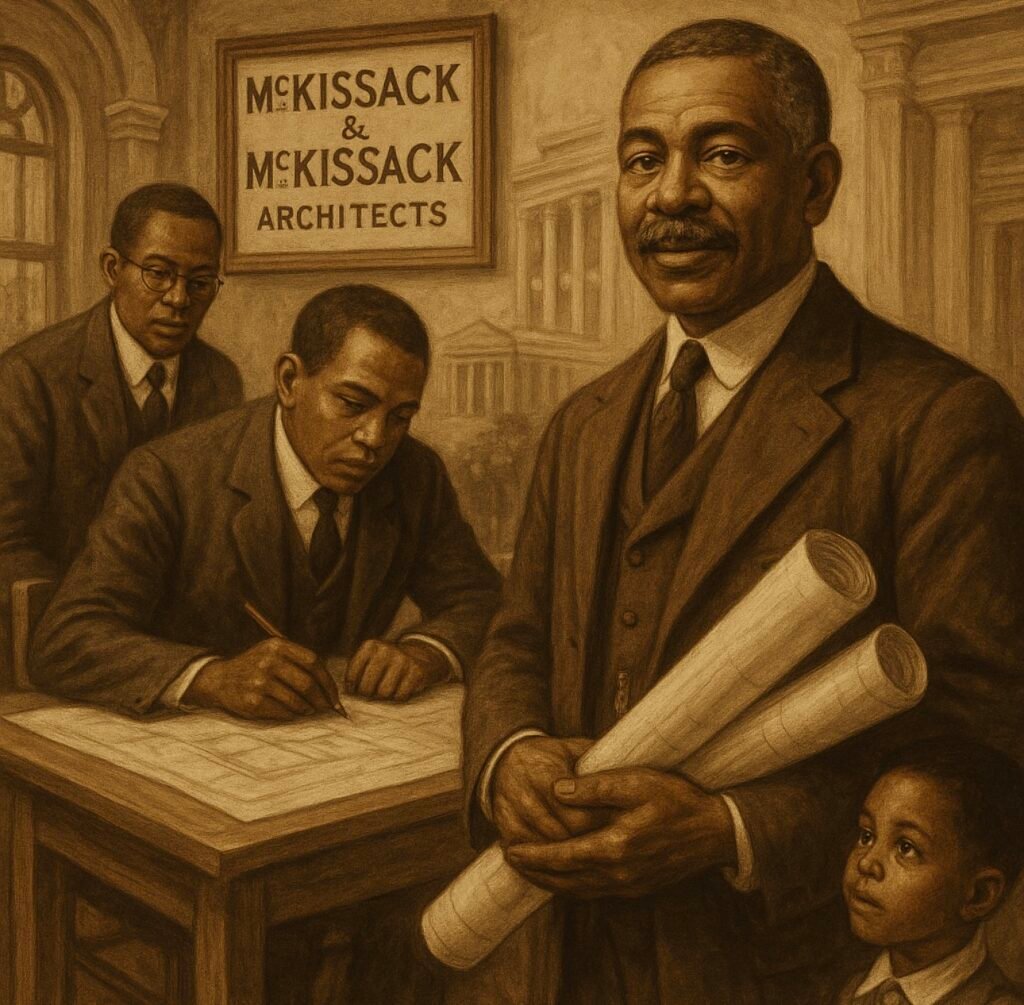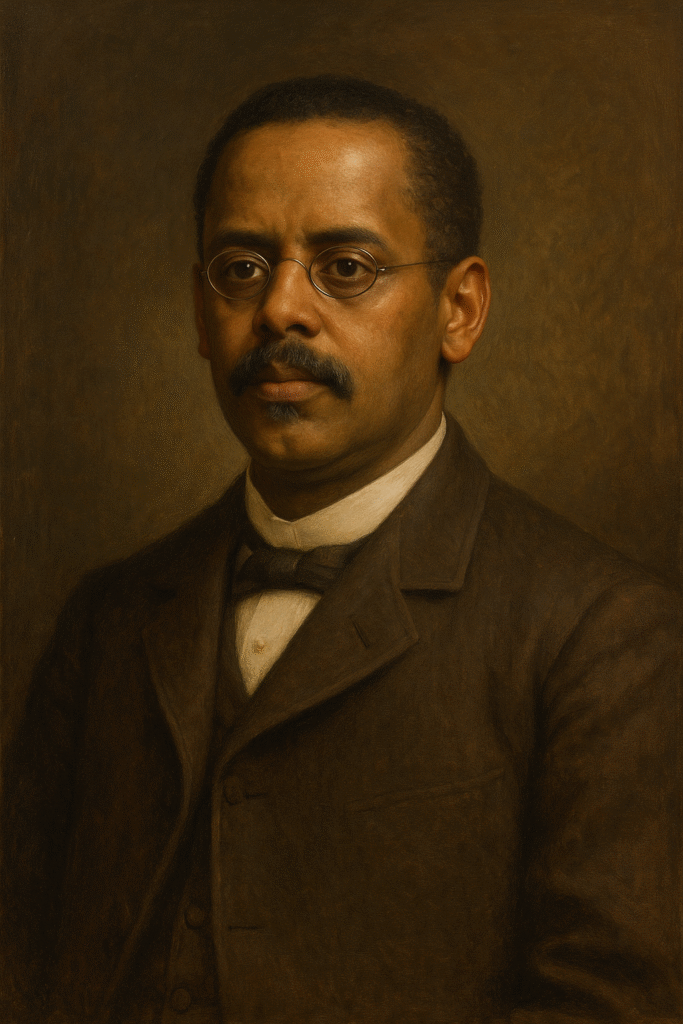Introduction: The Discovery of the Burial Ground
In the early 1990s, a remarkable event unfolded in Manhattan when construction crews unearthed a significant historical site: the African Burial Ground. Originally discovered during excavation for a skyscraper near Wall Street, the site was not only unexpected but also profound in its implications. As workers unearthed human remains and artifacts, it became clear that they had stumbled upon a burial ground that dated back to the 17th and 18th centuries, serving as the final resting place for an estimated 15,000 to 20,000 Africans and African Americans. This unexpected discovery triggered immediate responses from city officials, historians, and the community, highlighting the historical significance of the area.
The African Burial Ground was established during a period when slavery was legal in New York, and it became a crucial space for the African community. The initial reactions to the discovery varied; some authorities aimed to proceed with construction plans, while others recognized the cultural and historical value of the site. Advocacy from community leaders and historians led to the halting of construction, allowing time for research and excavation. This pause highlighted a growing awareness of the need to respect and honor the site’s historical importance.
As the excavation continued, archaeologists began to gather invaluable information about the lives, customs, and burial practices of those interred at the burial ground. The findings provided insights into the rich cultural tapestry of early New York, revealing stories of resilience and community that had long been overlooked. The site is now recognized not only as a burial ground but as a memorial to the contributions and struggles of African Americans throughout history. The discovery of the African Burial Ground marks a critical turning point in the recognition of New York’s diverse past and sets the stage for further exploration of its historical context.
Historical Context: The Origins of the African Burial Ground
The African Burial Ground in New York City holds profound historical significance, tracing its origins back to the 17th century during a period when enslaved Africans were forcibly brought to the region. This cemetery served as a crucial and poignant marker of the lives of thousands of Africans who lived and died in colonial New York. Initially, the area was designated as a burial site for those of African descent, contrasting sharply with the burial practices for white residents, which symbolized the stark social hierarchies of the era.
During the late 1600s and into the 1700s, New York became a burgeoning center for the transatlantic slave trade. The city’s growing economy was heavily dependent on the labor of enslaved individuals, who were integral to the agricultural and domestic sectors. As a result, a significant population of Africans resided in the city, leading to the establishment of the African Burial Ground as a necessary means to provide a final resting place for the deceased. This cemetery reflected not just a physical space but a cultural recognition of the deceased, honoring their lives and traditions in the face of the systemic dehumanization they endured.
The burial ground, covering approximately 6.6 acres, would eventually become the resting place for an estimated 15,000 to 20,000 individuals. This separate cemetery highlighted the racial divisions of the time, revealing how African Americans were relegated to specific social roles, including in death. The remains buried within this sacred ground serve as a testament to the rich, yet often painful, history of African and African American experiences in New York, encapsulating centuries of resilience and struggle amidst oppression. As we explore this historical context, it becomes necessary to acknowledge the collective memory that continues to resonate from this site, urging a deeper understanding of America’s complex past.
The Rediscovery: An Overview of the Excavation
In the early 1990s, a significant excavation effort took place in Lower Manhattan, prompted by construction activities that sought to erect a new government building. As workers began to dig, they unexpectedly unearthed human remains, which led to the discovery of the African Burial Ground, a historic grave site that had been long forgotten. This site, dating back to the 17th and 18th centuries, proved to be a vital link to understanding the lives and burial practices of enslaved Africans in colonial New York.
The excavation process was complex and required a collaborative effort between construction crews, archaeologists, and historians. Initial findings included thousands of skeletal remains, along with artifacts such as ceramics, metal objects, and other personal belongings. These discoveries unveiled a rich tapestry of cultural heritage, revealing evidence of African traditions and customs. Archaeologists employed a range of methods during the excavation, including stratigraphic analysis and careful field mapping, to ensure that every detail of the site was documented properly. This rigorous process helped to preserve the integrity of the findings while allowing for a comprehensive analysis of the burial ground.
Despite the excitement surrounding the discovery, the excavation faced challenges. The immediate tension between development and preservation raised critical concerns about respecting the heritage site and the individuals buried within it. Archaeologists had to navigate legal and ethical complexities, leading to discussions about how best to honor the memories of those interred. Moreover, the scale of the excavation expanded as further remains were uncovered, unveiling a startling number of graves. Ultimately, this revelation sparked a broader dialogue about the importance of acknowledging and preserving the history of marginalized communities in the face of modern development.
The Significance of the Findings
The discovery of the African Burial Ground in New York City marks an important archaeological milestone, revealing critical insights into the lives of enslaved Africans during the colonial period. This site, which served as a final resting place for thousands, has yielded a remarkable array of artifacts and remains that speak volumes about the social, cultural, and economic conditions faced by this marginalized community. The findings have significant implications for our understanding of African American history, challenging the prevailing narratives that often overlook or misrepresent the experiences of enslaved individuals.
Among the artifacts uncovered are items such as ceremonial and everyday objects, reflecting the rich cultural heritage of the African diaspora. These artifacts include personal adornments, tools, and remnants of burial offerings, which provide insights into the traditions, belief systems, and day-to-day struggles of enslaved Africans. Additionally, the human remains recovered from the site offer invaluable data for genetic and anthropological studies, allowing researchers to piece together demographic patterns and living conditions of enslaved populations in colonial New York.
The implications of these findings challenge the historical amnesia surrounding African American contributions, emphasizing the need for a more nuanced understanding of America’s past. By shining a light on the lives of those interred at this burial ground, scholars and educators can work to rectify the historical narrative that often marginalizes the contributions of African Americans. This critical shift in perspective not only honors the memory of those buried but also enriches our collective understanding of the social fabric of early New York.
In conclusion, the archaeological discoveries at the African Burial Ground serve as a powerful testament to the resilience and agency of enslaved Africans. They invite us to reflect on our shared history and recognize the profound impact that this community had in shaping the rich tapestry of American culture and society. Through these findings, we are reminded that history is not merely a record of the powerful but also a narrative of those who fought for dignity and recognition amidst profound adversity.
Community Response and Activism
The discovery of the African Burial Ground in New York City sparked an immediate and significant response from the local community, particularly among African American activists and historians. For decades, this historic site lay forgotten beneath the urban sprawl of Manhattan, a silent testament to the lives lost and stories untold. With the uncovering of this burial ground, a strong mobilization effort emerged, fueled by a shared commitment to ensuring that the graves and their cultural significance would not only be preserved but also honored. Prominent activists from various organizations came together to advocate for the site’s recognition, insisting on its importance in the broader narrative of American history.
Civic organizations played a crucial role in this grassroots movement, working tirelessly to garner public attention and legislative support. They organized rallies, educational programs, and community forums aimed at raising awareness about the burial ground’s significance. Through their efforts, they sought to underscore the importance of recognizing the contributions of African ancestors to the social fabric of New York City. Activists argued that the site was not merely a burial ground but a vital cultural heritage resource that needed preservation for future generations.
Additionally, historians joined the dialogue, providing scholarly insights into the lives of the individuals interred at the site, illuminating the plight and resilience of enslaved and free Africans during the colonial period. Their research served to amplify the voices of those who had been silenced throughout history. As public interest grew, pressure mounted on local government and developers to ensure that any proposed construction in the area would respect and honor the burial ground. Ultimately, the collaboration between community members, activists, historians, and civic organizations forged a movement dedicated to preserving not just the physical space but also the legacy and memory of those who came before us.
The Design and Creation of the African Burial Ground National Monument
The African Burial Ground National Monument, a site of profound historical significance, embodies both the pain and resilience of African American ancestry. Its creation originated from the late 20th century when modern construction efforts threatened to destroy a cemetery that had served as a resting place for enslaved and free Africans in colonial New York. The discovery of human remains during excavations in 1991 sparked a wave of activism among communities and historians, initiating a crucial dialogue surrounding the burial ground and its historical context.
In response to the unearthed remains and the potential loss of the site, the federal government intervened, ultimately designating the area a national monument in 2006. This decision underscored the essential need to honor the lives that were interred there and acknowledge the historical struggles they endured. The design process for the monument was a collaborative effort involving landscape architects, historians, and representatives from the African American community. This collaboration sought to ensure that the site was both respectful and educational, appropriately commemorating the individuals buried there while also serving as a place for reflection and learning.
Key features of the African Burial Ground National Monument include an interpretive center and a memorial designed to evoke the spirit and memory of those interred. The memorial itself is thoughtfully laid out with a series of granite stones representing the lives lost and the legacy left behind. The site functions not only as a memorial to the deceased but also as a vital educational resource, imparting knowledge about the history of African Americans in New York and their contributions to the nation’s fabric. Preserving this site is crucial for recognizing the often-overlooked parts of American history and providing future generations with the opportunity to connect with their past.
Ongoing Research and Education
The African Burial Ground in New York City, an essential site for understanding African American history, continues to be the focus of ongoing research aimed at uncovering the complexities of its past. Scholars, archaeologists, and historians are meticulously studying the remains and artifacts unearthed at the site, employing advanced scientific techniques to gather invaluable data. These studies not only provide insights into the burial practices and life of the African diaspora in the 17th and 18th centuries but also offer a broader perspective on the historical injustices faced by the descendants of enslaved individuals.
One significant aspect of this research involves bioarchaeology, which examines human skeletal remains to draw information regarding health, diet, and demographic patterns. This research facilitates a deeper understanding of the lived experiences of those interred at the burial ground and highlights their contributions to the societal fabric of New York City. Additionally, the analysis of artifacts found during excavations—ranging from personal items to burial offerings—further aids in painting a more comprehensive picture of the cultural heritage of African Americans in colonial America.
Educational programs have emerged as a vital tool for promoting awareness about African American history and heritage. Collaborations between local community organizations, scholars, and educational institutions foster an environment where history can be shared and understood more broadly. These initiatives include workshops, public lectures, and guided tours that not only educate the public about the significance of the site but also emphasize its enduring relevance in contemporary discussions about race and identity. By engaging various stakeholders, including students and local residents, these programs aim to keep the memory of the African Burial Ground alive while furthering the discourse on social justice and historical preservation.
Reflections on Memory and Legacy
The African Burial Ground in New York City holds a profound significance that extends far beyond its historical context. It serves as a powerful reminder of the lives, experiences, and enduring legacy of enslaved Africans who contributed to the development of the city and the nation at large. This site has become a focal point for individual and collective reflections on memory, identity, and reconciliation. By recognizing the burial ground as a sacred space, we engage in a critical dialogue about the complexities of our shared history.
Memory plays an essential role in shaping identity, particularly for communities whose narratives have often been marginalized or omitted from mainstream historical accounts. The African Burial Ground not only preserves the identities of those buried there but also invites descendants and the public to engage with their heritage actively. It reminds us of the resilience of African culture, which persisted despite centuries of oppression. In honoring the ancestors interred within this sacred ground, we also acknowledge the foundations of our contemporary society built upon their struggles and contributions.
Furthermore, the site stands as a testament to the need for reconciliation in our ongoing journey towards social justice. It emphasizes the importance of acknowledging past injustices to heal generational wounds. Engaging in remembrance allows us to confront uncomfortable truths while fostering understanding and compassion. The African Burial Ground serves as a catalyst for exploration—prompting discussions about race, equality, and the importance of historic preservation. It challenges us to reflect on how we can cultivate a society that honors its diverse histories and promotes inclusivity and truth.
As we engage with this legacy, the African Burial Ground embodies a call to action—a means for individuals and communities to confront their own histories while fostering a deeper connection to the past. In our commemoration and reflection, we play a part in ensuring that these voices are heard and that their stories continue to shape our future.
Conclusion: Learning from the Past
The narrative surrounding the stolen African Burial Ground in New York City serves as a profound reminder of the historical injustices faced by African Americans. During our exploration, we examined the significance of the burial ground, which stands as a testament to the lives and contributions of African ancestors, many of whom were enslaved. Recognizing the site’s historical value not only honors those who were interred there but also sheds light on the broader context of African American history in the United States.
Engaging with this history is essential for fostering a comprehensive understanding of our past, especially in relation to systemic racism and its ramifications that persist today. By uncovering and acknowledging these injustices, we create an opportunity for reflection and ultimately, reconciliation. The efforts to preserve the burial site highlight not only the need for respect towards historical landmarks but also advocate for the continued recognition of African American heritage in contemporary society.
Furthermore, it is imperative to recognize that educating future generations about the complexities of American history is a shared responsibility. Schools, communities, and cultural institutions must prioritize inclusive histories that encompass the experiences of marginalized groups. By discussing and integrating these narratives into educational frameworks, we can foster critical thinking and empathy among young learners. This approach ensures that the historical context of African America is not relegated to obscurity but remains a critical part of our collective consciousness.
In conclusion, the story of the stolen African Burial Ground is more than just a historical account; it is a call to action. Acknowledging the past equips us to advocate for justice, respect for heritage, and the importance of teaching history accurately. By learning from our shared history, we can contribute to a more equitable future that honors the sacrifices of those who came before us.










